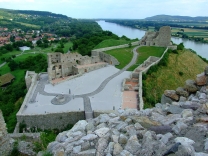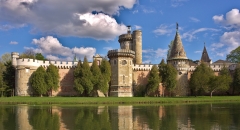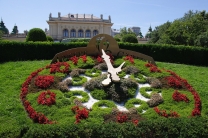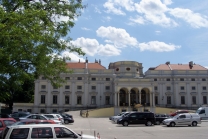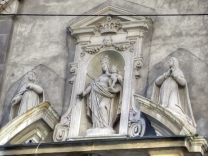Carnuntum
Carnuntum
Human settlement in AustriaCarnuntum (Carnous, Καρνους, in Ancient Greek according to Ptolemy) was a Roman legionary fortress (castrum legionarium) and headquarters of the Pannonian fleet from 50 AD. After the 1st century, it was capital of the Pannonia Superior province. It also became a large city of 50,000 inhabitants.
Its impressive remains are situated on the Danube in Lower Austria halfway between Vienna and Bratislava in the Carnuntum Archaeological Park extending over an area of 10 km2 near today's villages of Petronell-Carnuntum and Bad Deutsch-Altenburg.
History
Military history
Carnuntum first occurs in history during the reign of Augustus (6 AD), when Tiberius made it his base of operations as a Roman fort (castrum) in the campaigns against Maroboduus (Marbod).
Legio XV Apollinaris
Significant Romanisation occurred when the town was selected as the garrison of the Legio XV Apollinaris before 14 AD. A few years later, it became the centre of the Roman fortifications along the Danube from Vindobona (now Vienna) to Brigetio (Ó-Szőny). According to Tacitus, the emperor Claudius ordered the governor of Pannonia "to have a legion with an auxiliary on the bank of the Danube" to protect the losers of a dispute between Germanic tribes (the Quadi and Marcomanni) and deter the victors from the temptation to invade Pannonia. To this period (about 50 AD) belongs the auxiliary castrum of a cavalry ala 1.5 km south-west of the legionary fortress.
In 71 AD, after several campaigns, the Legio X Apollinaris returned to Carnuntum and rebuilt its fortress. While some of the legion fought in Trajan's Dacian Wars, the main body of the legion remained in Pannonia.
Legio X Gemina
Legio X Gemina was sent to Carnuntum for a few years from about 63 AD. During the brief reign of Galba (68–69), it was transferred back to Hispania.
Legio VII Gemina
Legio VII Gemina, newly founded by Galba in 68 AD, was allocated to Carnuntum until about 71 AD after his defeat by Vespasian.
Legio XIV Gemina
In 117-118 AD, Carnuntum became the permanent quarters...










